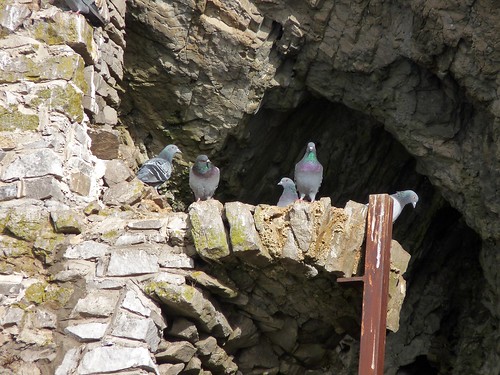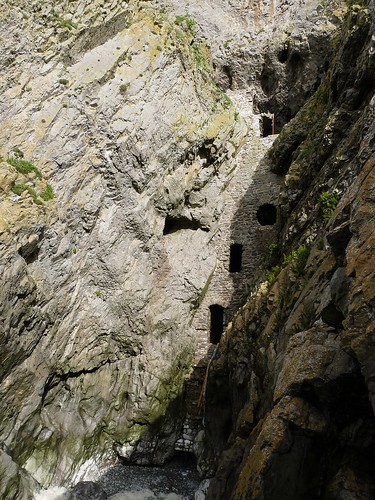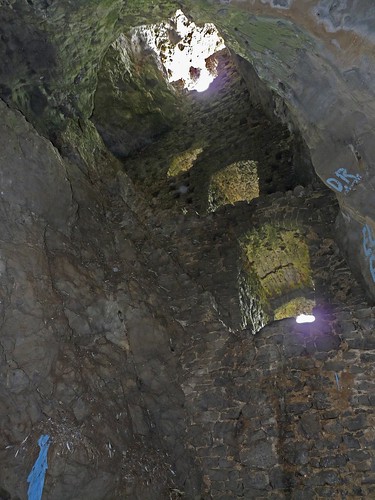We are all familiar with the feral pigeons which often plague our city centres, but what of their origins? After all they didn’t always have cities to inhabit. The ancestor of todays Feral Pigeon is the Rock Dove, which also has direct links to some 228 varieties of domesticated pigeons. Due to interbreeding finding ‘pure’ Rock Doves these days is becoming increasingly difficult. According to the RSPB it is likely that the last populations now only live along the North and West coasts of Scotland where they breed along steep sea cliffs. However, the pictures that accompany this post show what I believe to be very close to ‘pure’ Rock Doves, photographed along the Gower coast at Culver Hole. The only clue to the sullying of their lineage are the extra black markings found on the wings. The habitat certainly matches that of the Rock Dove, being a sheer wall of stone within which they nest. This is by no means a natural feature however.
The origins of Culver Hole are shrouded in mystery with some claiming the feature was built to hide smuggling activities for which this coast used to be famous for. The most likely explanation though is that it was built to house pigeons which were then harvested for food. From inside it can be seen that there are clear ledges upon which birds could roost and the remains of staircases reaching up to the upper levels. Either way it is now home to what may be the purest Rock Doves along this coast.







1 Comment
Johnny Nutcase · December 2, 2009 at 11:52 pm
Pretty cool – Culver Hole looks like an intriguing place. I've never heard of it, but it definitely looks like a decent hiding place. Interesting about the Rock Doves, too!